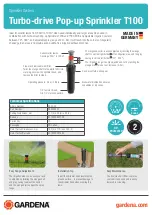
POS MV V5 Installation and Operation Guide
POS-GPS
Timing
Copyright © Applanix Corporation, 2017
H-3
If the position is unknown, the receiver can find its own position and solve for time by tracking four or
more GNSS satellites. This is called the dynamic mode, and is the mode used in moving platform
applications.
Alternatively, timing receivers can be told to use a known fixed position, in which case the receiver can
solve for time by tracking a minimum of one satellite. This is called the static mode, and it is used in
applications where the position is fixed.
Timing Accuracy
Errors in the time of occurrence of the 1PPS pulses from the GNSS receiver consist of three parts:
•
Bias - a fixed offset due to uncompensated delay errors in the receiver/antenna system
•
Drift - variations in timing over long periods due primarily to differences in satellites tracked over
time
•
Jitter - short-term variations in timing from pulse to pulse
These error sources are inherent in the both the GNSS system and the GNSS receiver. The sum of these
errors can be as low as a few tenths of a microsecond or up to a few microseconds. This high level of
accuracy is possible because the timekeeping maintained within the GNSS system is continuously
adjusted to null out timing errors.
Output Characteristics
The 1PPS signal (from the GNSS) is usually in the form of a pulse of whose duration varies between
microseconds and milliseconds, at Transistor-Transistor Logic (TTL) or RS-232 signal levels.
Time Message
The 1PPS signal provides an accurate time mark, but is ambiguous unless coupled with a time stamp.
Most timing systems specify a time message that is transmitted (usually over a serial data port) that gives
the date and time of day for each occurrence of the 1PPS signal. This time message is sent in between
the 1PPS signals and may be specified to time-tag either the 1PPS that has just occurred, or the one that
is just about to happen.
POS System Timing
There are a number of aspects to POS system timing; there is the internal timing of sensor data and the
navigation solution, there is the ability to synchronize external equipment to POS, or POS can be
synchronized to external equipment time, all ICD data output from POS includes time tags, and the user
can generate event pulses which are time tagged by POS and then made available for output or logging.
Each of these items are described in the following sections.
Содержание POS MV V5
Страница 1: ...POS MV V5 Installation and Operation Guide Document PUBS MAN 004291 Revision 16 Date 29 August 2017 ...
Страница 2: ......
Страница 4: ......
Страница 40: ......
Страница 98: ...POS MV V5 Installation and Operation Guide Interfaces and Data Formats 3 24 ...
Страница 130: ...POS MV V5 Installation and Operation Guide System Configuration 4 32 Figure 39 POSView Controller Password Protection ...
Страница 156: ......
Страница 160: ......
Страница 174: ......
Страница 181: ...POS MV V5 Installation and Operation Guide Fault Identification Copyright Applanix Corporation 2017 9 7 ...
Страница 244: ......
Страница 248: ......
Страница 274: ......
Страница 282: ......















































